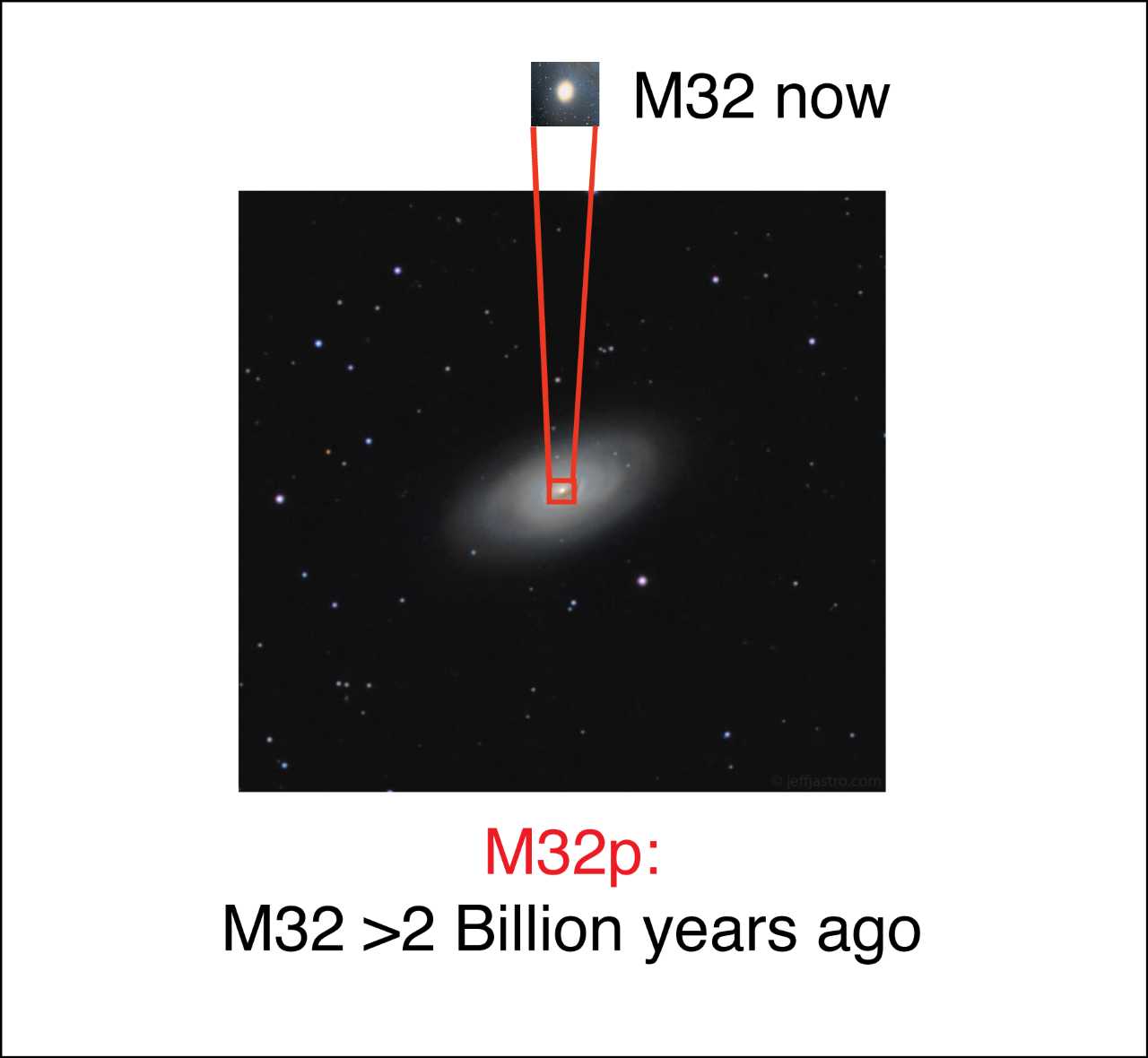Andromeda Killed and Ate Another Galaxy

Astronomers have solved an intergalactic murder mystery: Andromeda did it. And researchers have found the victim's corpse.
A new paper published Monday (July 23) in the journal Nature Astronomy reads like an account of TV detective show. The researchers carefully studied a mysterious trail of stars, a shrunken galactic body and the faint halo of stellar remains around Andromeda (the Milky Way's nearest galactic sibling of similar size) in order to piece together the facts: About 2 billion years ago — around the same time that eukaryotes, our most basic ancestors, first formed on Earth — there was a third large galaxy in the neighborhood. But Andromeda shredded it, gobbled it up and tossed its corpse into the dark.
Researchers had suspected for a long time that Andromeda might have undergone a merger in the recent past, said Amanda Moffett, an astronomer and galaxy evolution expert at Vanderbilt University who was not involved in the study. What's new and surprising, she said, is the idea presented in the paper that M32, a small dwarf galaxy in Andromeda's orbit, is actually the corpse of the much larger galaxy destroyed in that merger. [Images of Andromeda]
"When people put forth this murder scenario in the past, there was a question of what happened to the actual progenitor [or destroyed galaxy]," Moffett said. "Has it just so thoroughly merged into Andromeda that we can't pick them apart anymore?"
To answer that question, the researchers ran some careful computer simulations of galaxy interaction. They found that, with the correct parameters, a galaxy merger 2 billion years ago could produce the clues seen around Andromeda today: a long stream of stars stretching out into the universe, an extra-thick mist of loose stars around Andromeda itself, a bunch of stars in Andromeda that formed 2 billion years ago, and — critically — the core of that lost galaxy still floating nearby, in the form of M32.
"This explains why M32 is a very unusual galaxy in a number of ways," Moffett said.
Typically, she explained, dwarf galaxies like M32 are made up of stars that all formed around the same time and from the same little clump of material. Bigger galaxies like the Milky Way and Andromeda tend to have stars with a much wider range of ages. But the stars of M32 are like the stars of a bigger galaxy, in that they are spread out in age across billions of years.
Sign up for the Live Science daily newsletter now
Get the world’s most fascinating discoveries delivered straight to your inbox.
This murder scenario could explain the odd age range — M32 was once a much bigger galaxy that got stripped down, rather than a small clump that formed all at once in its present form. So, this paper solves two mysteries at once, Moffett said: what happened to Andromeda's murder victim, and why M32 looks so weird.

There are still some open questions, Moffett said. Andromeda has another dwarf neighbor, known as M33, that's almost as big as M32. The paper does a good job of explaining how M32 got where it is, but not how M33 ended up there.
That's a question relevant to the broader, still-unanswered question of whether the Milky Way and Andromeda are oddballs in a universe filled with galaxies devoid of orbiting dwarf galaxies, or whether this is how most big galaxies arrange themselves.
Hopefully, scientists will be able to answer that question in the next 4 billion years, before Andromeda gobbles us up as well.
Originally published on Live Science.










